 |
 |
 |
| |
A Switch from FTC/TDF to Raltegravir in Patients on a Boosted Protease Inhibitor Is Effective in Reducing Proteinuria and Increasing GFR
|
| |
| |
Reported by Jules Levin
ICAAC 2011
U. Fritz Bredeek1, Rodolfo Guadron1, Ron Yolo2, Stefan Schneider2
1Metropolis Medical Group, San Francisco, CA; 2Living Hope Foundation, Long Beach, CA
Corresponding author:
Fritz Bredeek, MD PO Box 641230,
San Francisco, CA 94164-1230
Phone: 415 292-5477,
Fax: 415 292-5490,
Email: fritz@doctor.com

ABSTRACT
Introduction: Tenofovir (TDF) can cause proteinuria and a decrease in Glomerular Filtration Rate (GFR) in some patients. The incidence of both appears to be increased when TDF is paired with a boosted protease inhibitor (PI/r).
Methods: 21 subjects with undetectable viral load (VL) and proteinuria on a TDF and PI/r (atazanavir, lopinavir or fos-amprenavir) containing regimen were switched off TDF and the nucleoside to raltegravir (RAL) without a change of the PI/r. All subjects were treatment-naive to integrase inhibitors (INSTI) and without pre-existing PI resistance. Urine Protein Clearance (UPC), GFR, Lipids, VL and CD4 count were measured at baseline and at weeks 4, 12 and 24.
Results: Mean urine protein (UP) at baseline was 48 mg/dl (range 7-154). UP decreased over 24 weeks (mean -10.8 mg/dl), 14 subjects were responders (mean -19.9 mg/dl, range -1.1 to -51.8), and 6 were non-responders (mean +5.7 mg/dl, range 2.9 to 11.9). Similarly, UPC decreased (mean -86 mg/g), 14 subjects were responders (mean -122 mg/g, range -4 to -394), and 6 were non-responders (mean +21 mg/g, range +3 to +37). Mean GFR increase by Cockroft-Gault was 17.5 ml/min (range 2-63). Increase was seen in all subjects completing the study. No significant changes in CD4 counts or lipids were seen at 24 weeks. One subject developed virologic failure with INSTI mutation on Genotype at week 24; all other subjects remained virologically suppressed. One subjects developed acute renal failure (ARF) at week 4, and is not included in the above analysis.
Conclusions: A Nuc-sparing regimen of a PI/r and RAL increases renal function and resolves or reduces proteinuria in subjects previously on TDF. A switch in virologically controlled subjects without PI/r or INSTI resistance maintained virologic control in a 24 week period.
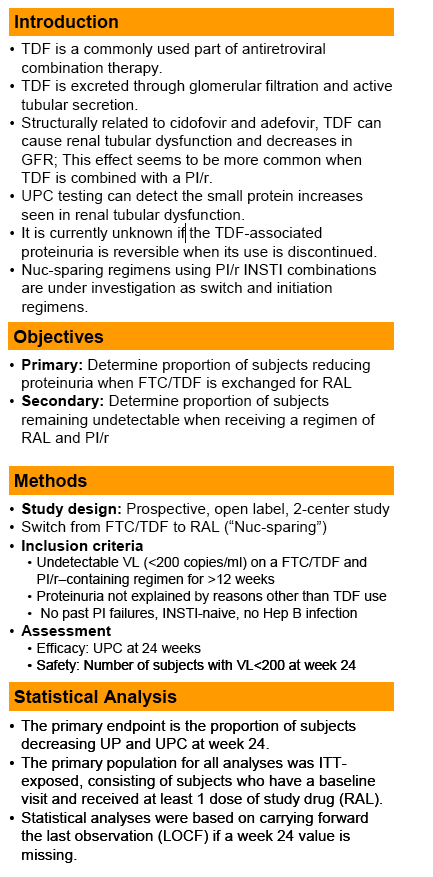
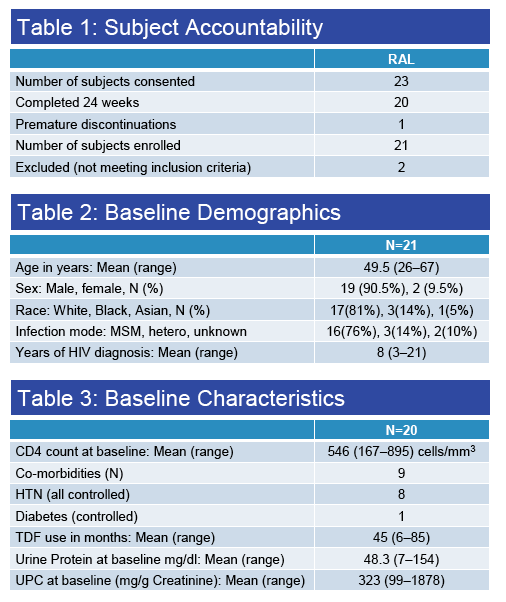
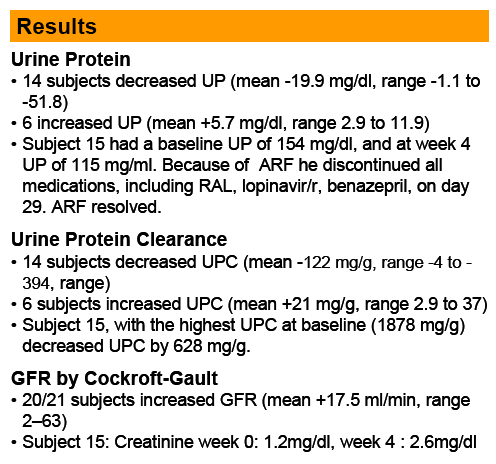
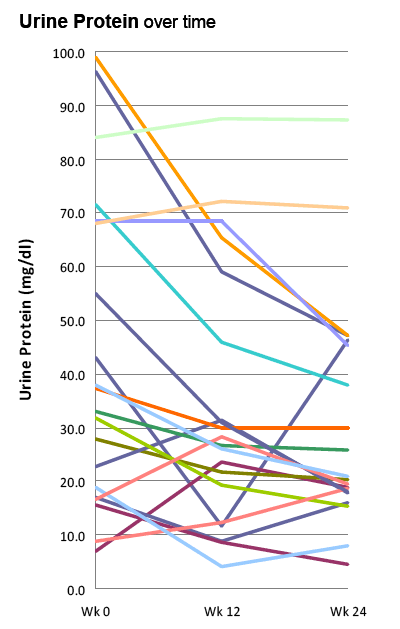
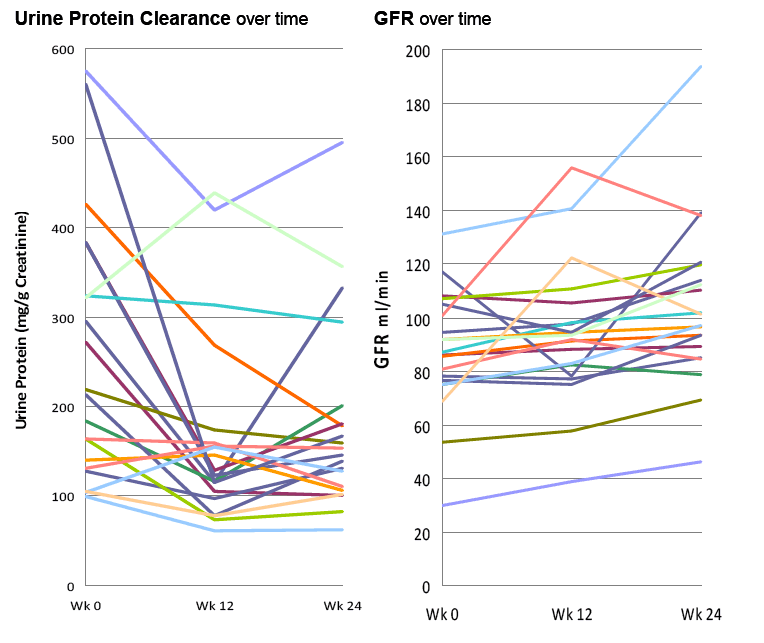
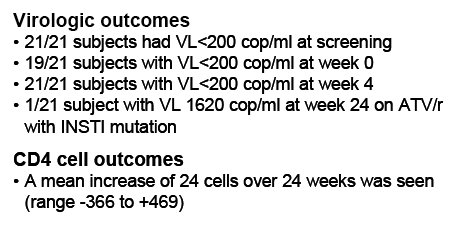
|
| |
|
 |
 |
|
|